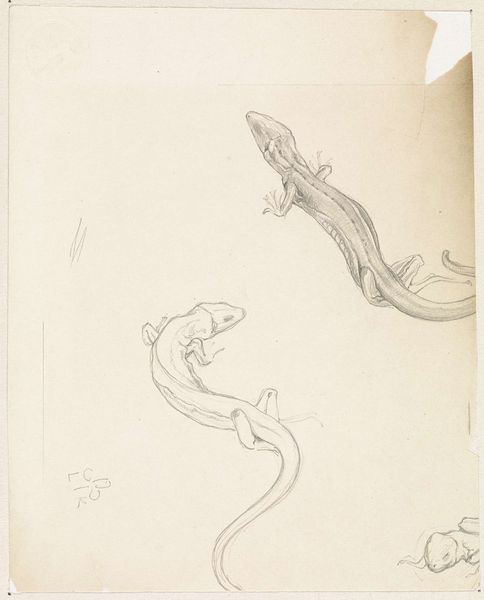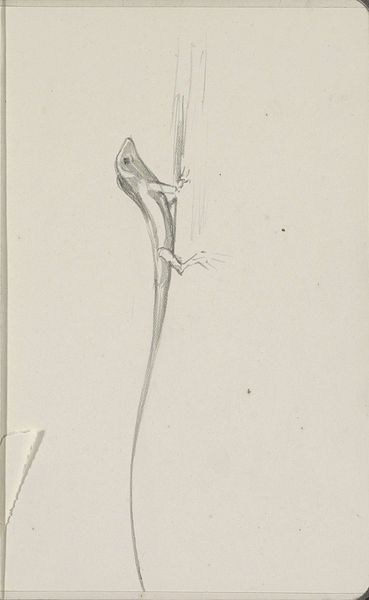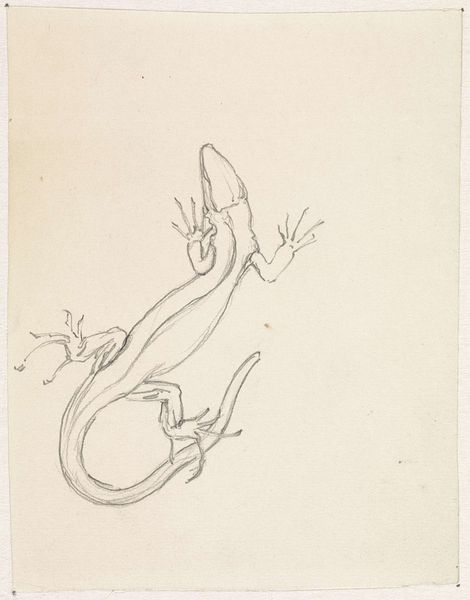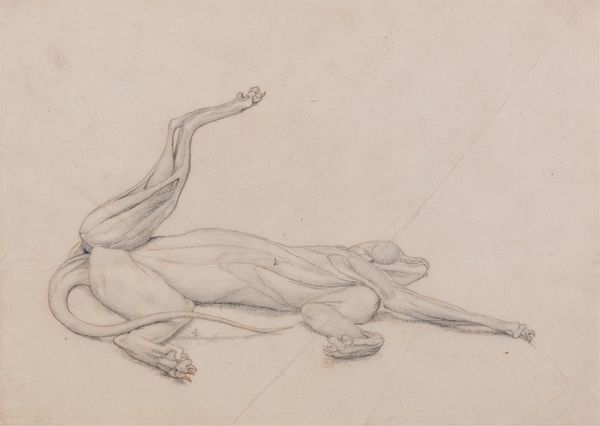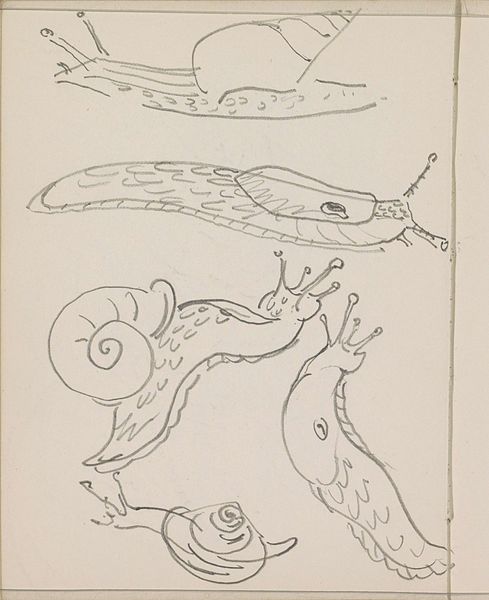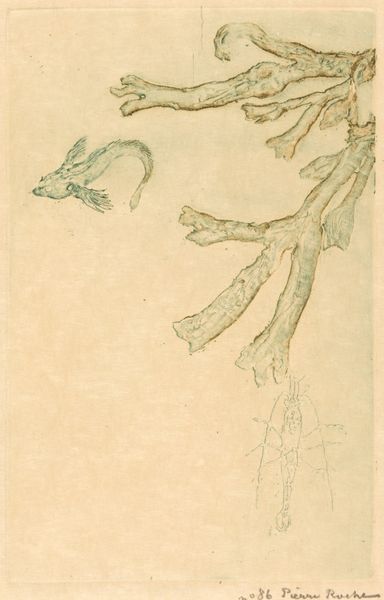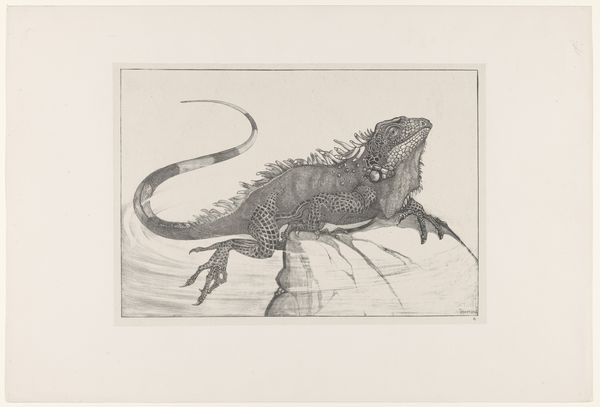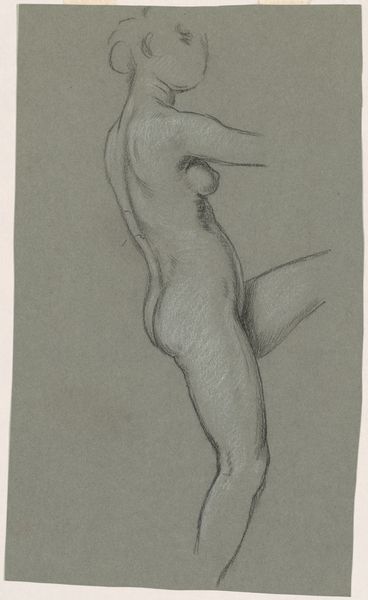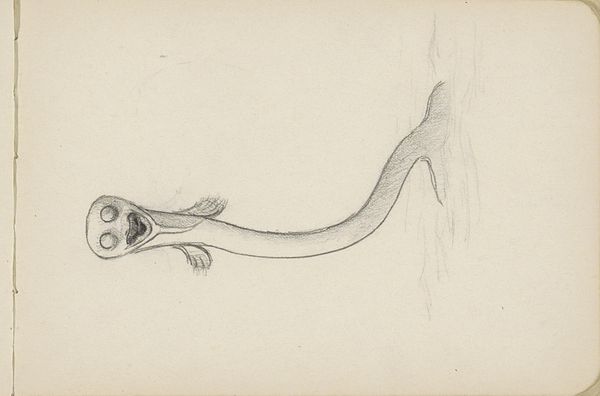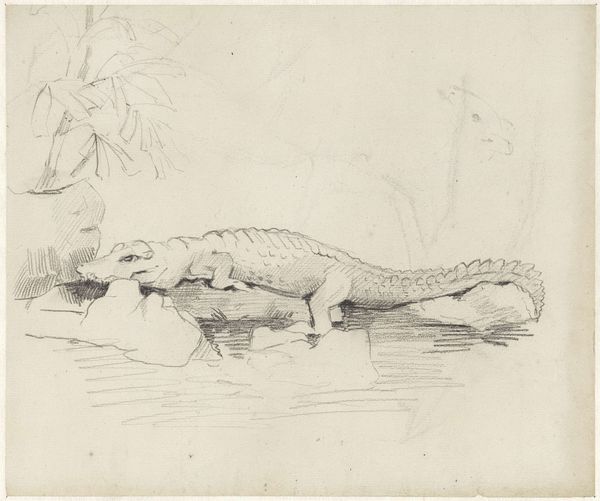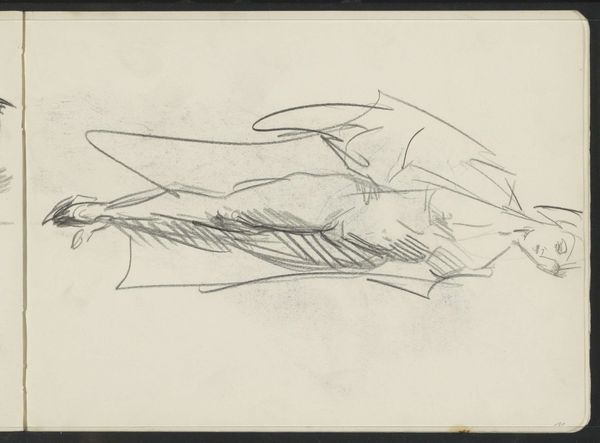
drawing, pencil
#
drawing
#
animal
#
pencil sketch
#
figuration
#
pencil
#
line
#
realism
Dimensions: height 176 mm, width 123 mm
Copyright: Rijks Museum: Open Domain
Curator: Looking at "Hagedis," created by Julie de Graag sometime between 1887 and 1924, the first thing that strikes me is the stark simplicity. It’s just a pencil drawing of a lizard. Editor: It's rather unsettling, isn't it? The pale, almost ghostly quality of the pencil on paper gives it a feeling of scientific detachment, like an illustration from a forgotten textbook. I wonder about the cultural significance of lizards during that time. Were they simply subjects for observation, or did they hold symbolic weight? Curator: I think both can be true at once. Throughout history, lizards have been symbols of regeneration, adaptability, even good fortune in some cultures, contrasting other associations like evil or fear. Considering De Graag’s interest in natural forms, the choice of a lizard suggests something about transformation, shedding old skin for new. Editor: Fascinating. From a social history point of view, one wonders where de Graag might have encountered the lizard, and how accessible such creatures were to artists, especially women artists at that time. Could she have observed it in a terrarium, or perhaps in a more natural setting? And how would gender norms shape her perception and depiction? Curator: Good points! The Rijksmuseum tells us this is a drawing. What's amazing is the starkness and detailed realism. There are incredibly subtle pencil strokes. You can really feel the texture of the lizard’s skin. Editor: I'd add, despite the realism, there's an almost abstracted quality too. The background is pure negative space, focusing our attention entirely on the creature. Curator: And that position... ventral view is not what one expects from such art! Perhaps that vantage gives it more weight, makes the viewer reconsider their perspective when looking at life. Editor: In that respect, the artwork challenges conventional notions of beauty and deserves its place in the collection here at the Rijksmuseum. The "Hagedis" serves as a subtle reminder of the diverse narratives interwoven within the visual arts. Curator: Indeed. It invites a closer look at the relationship between art, science, and cultural perceptions, especially now, years later.
Comments
No comments
Be the first to comment and join the conversation on the ultimate creative platform.

